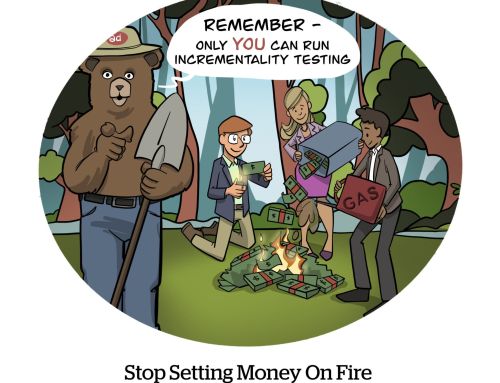About a year ago, I became digital director at Salesforce.org (the nonprofit arm of Salesforce). I suddenly found myself in a committed long-term relationship with the website — and it was a real fixer-upper.
As I learned from “Sex and the City,” before making any major relationship decision, you have to discuss it with your friends over lunch. In this case, it was a friend who also works in marketing for a B2B tech company and also happened to have just finished a website redesign (I know, I need to branch out).
I listened selectively and ended up ignoring half of his advice.
1. ‘Design by committee never works.’
I told my friend that I wanted to start the whole process with a daylong series of meetings with everyone who had anything to do with the website, from sales and product to HR and legal. My digital team, IT and our agency would sit there the whole day and listen to everyone’s thoughts and feelings about the site. That feedback would inform our list of priorities.
My friend thought this was a terrible idea. He gave me the design by committee spiel, but I went ahead with my website offsite. Yes, it made things harder from day one. We had design reviews with 20 people on the call. I got very good at shouting, “If you’re not speaking, please mute your line!”
But in the end, I think I was right. From day one, everyone felt like it wasn’t just the marketing team’s website redesign, but the whole organization’s website redesign. That paid dividends in terms of buy-in and internal visibility for the project.
2. ‘Don’t get stuck in a waterfall and don’t try to boil the ocean.’
I almost ignored this piece of advice because he combined two water-based metaphors in one sentence. But what he was really saying was admittedly wise: Be flexible and prioritize.
I had the flexibility piece covered. There was no question in my mind that we were going to follow an agile methodology, which I do whether I’m building a website or arranging my sock drawer. But agile is more about how you get things done, not what. Faced with the long list of pages and processes that needed attention, I had no idea what we were going to do first, second and last.
But with feedback from the organization (see No. 1 above) and data from Google Analytics (see No. 3 below), we finally came up with this list:
• Documents created: digital audit, SEO best practices
• Pages redesigned and deployed: homepage, about us page, top-level product pages, free trial sign-up (our primary conversion point), landing page forms
3. ‘Let the data do the talking.’
Yes, you should always start with the data. But you should also know when to stop with the data. Google Analytics is an absolute goldmine — every marketer knows this. But, as it’s told in the ancient myth, if you stare into Google Analytics for too long, you will turn to stone.
Still, we did our data due diligence, looking at the pages with:
• The highest and lowest traffic
• The most traffic from various channels: search, email, social, etc.
• The highest and lowest conversions (in our case, form fills)
But I ended up with a list of priorities that looked sort of wrong. So I also asked more qualitative questions:
• What pages do customers say are most useful?
• What pages do our executives see the most?
• What older pages are so in need of an update that it’s humiliating?
After putting all of the possible pages and projects through these two litmus tests, what we came up with looked and felt right, to both my team and our execs.
Remember that data only tells part of the story. Is it right to include a page in the redesign that one of our executives really cares about but doesn’t have a lot of traffic or conversion? According to the data, no. But I would love to continue to get budget, so I went ahead and threw that page in.
4. ‘Work with an agency. Pay them to do all the dev.’
I did work with an agency, and it was a great decision. I love them. No one could have done a better job getting us to an amazing product. But there’s creating a product and there’s deploying a product. For that, it had to be our internal enterprise systems team.
Here’s how we broke it down:
• Out-of-house (agency): analysis, discovery and requirements gathering, wireframes, design, front-end development
• In-house (internal enterprise systems team): back-end development, back-end integration, quality assurance testing (QA), deployment
The main reason for this division of labor was the back-end integration piece. An agency is never going to know your stack like your internal IT or marketing technology team does. Plus, IT is probably working on other internal projects that could affect something like the lead routing process from your site to your CRM. Best to let them handle the back-end dev and integration so that the agency’s beautiful design gels with everything happening in the part of your site where the sun don’t shine.
5. ‘Before you start the redesign, consider changing your host and CMS.’
This was good guidance, but we decided that it wasn’t worth it at the moment. We like our hosting provider. We’re fine with our CMS, and it seemed like fancier ones would require more staff to maintain.
Remember that I had just taken over this role, so I wanted to score some points in the first year of overseeing the website. Re-platforming would’ve had some benefits, but it also would’ve taken almost all of that first year and externally, while leaving the site looking virtually the same to the naked eye. That’s not what I’d call hitting the ground running, so I tabled the platform discussion in favor of sexier things like redesigning the homepage.
Foiled again by quick wins and sheer vanity.











